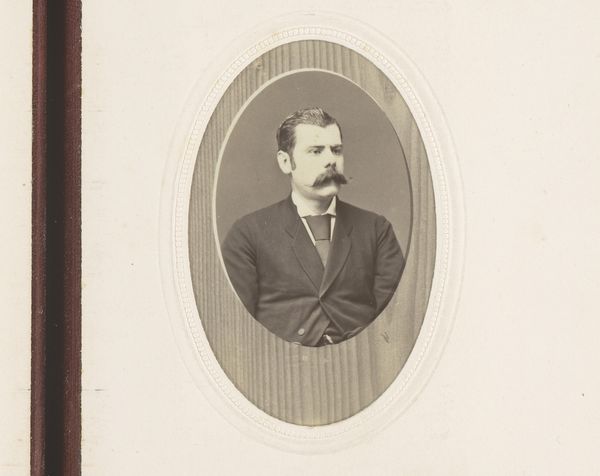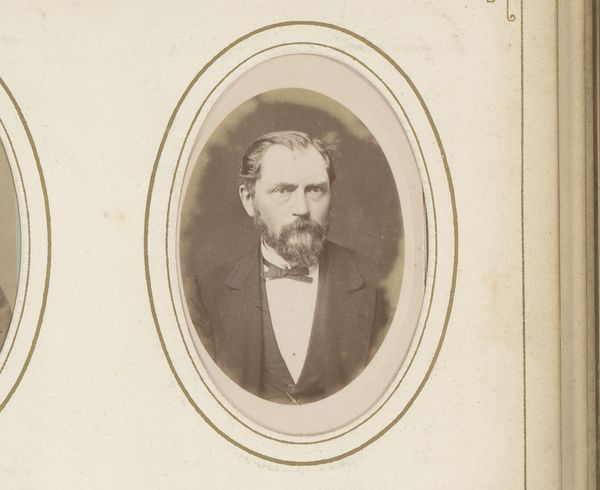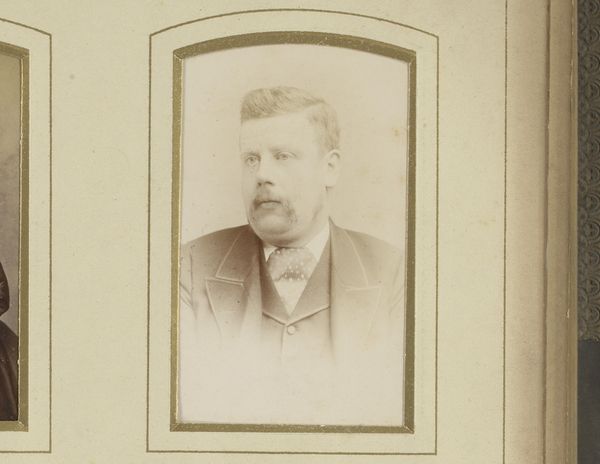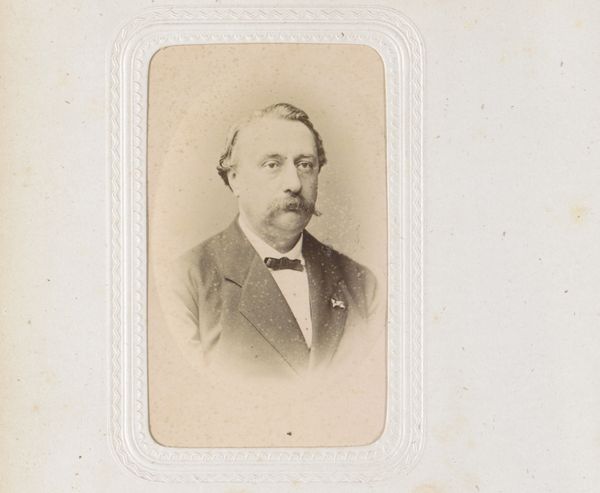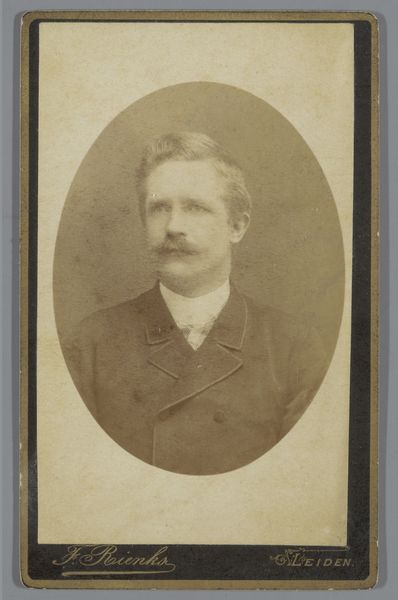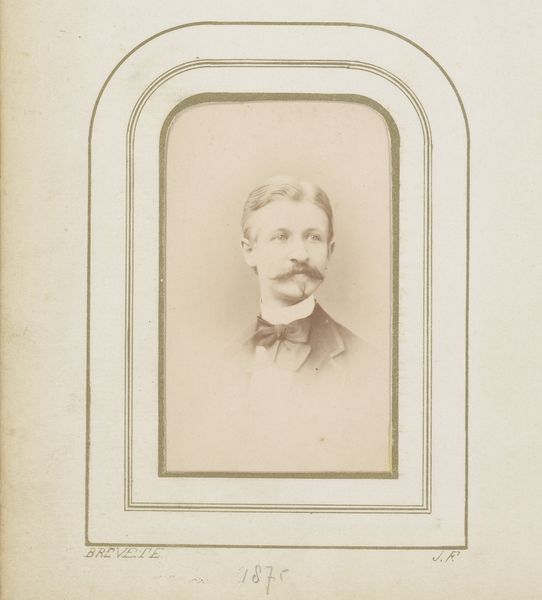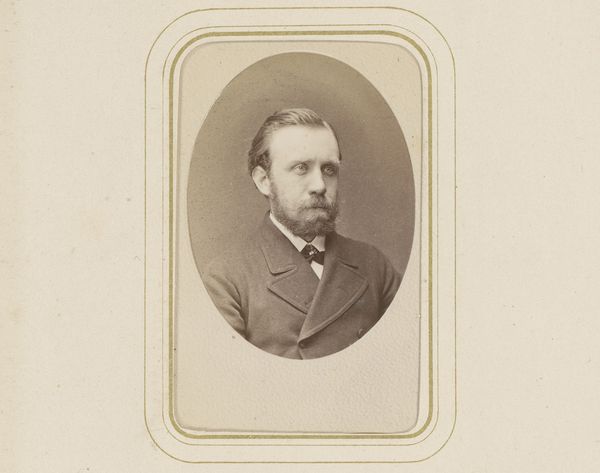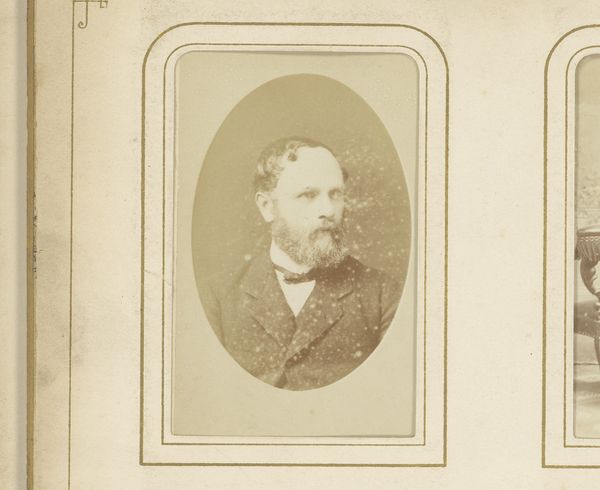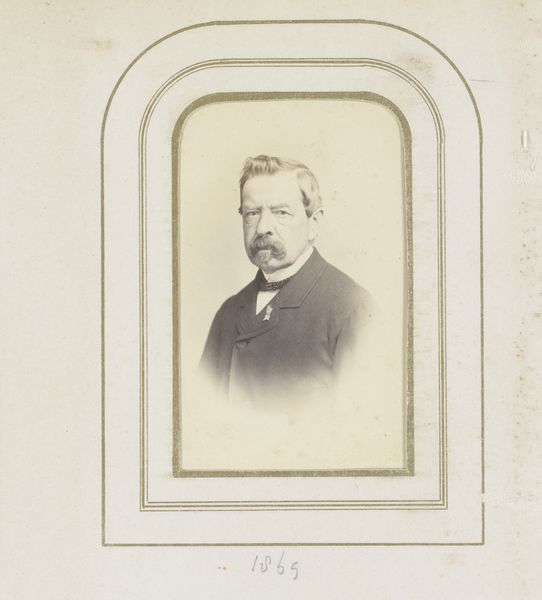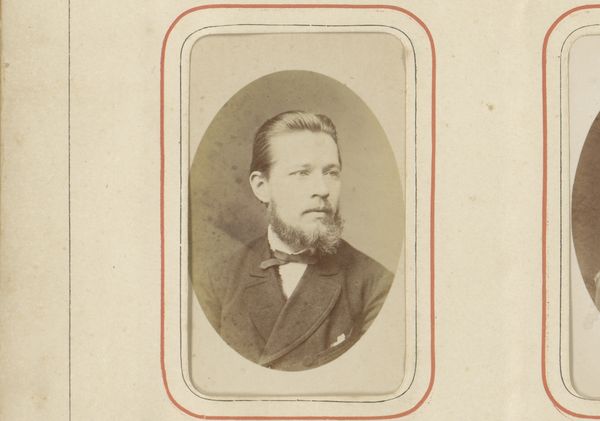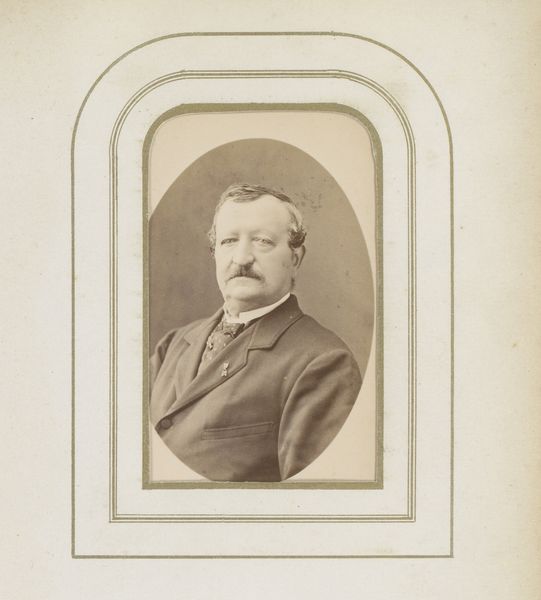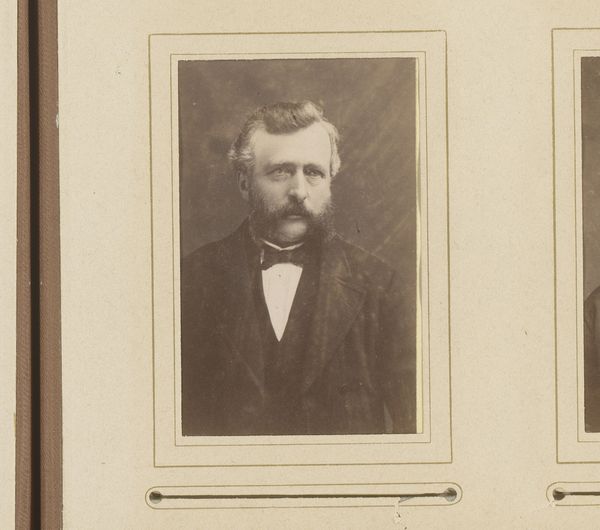
photography
#
portrait
#
aged paper
#
toned paper
#
vintage
#
photo restoration
#
charcoal art
#
photography
#
portrait reference
#
19th century
#
portrait drawing
#
genre-painting
#
realism
Dimensions: height 105 mm, width 63 mm
Copyright: Rijks Museum: Open Domain
Editor: Here we have "Portret van een man, aangeduid als Mr. Gouski," made sometime between 1870 and 1900, in the medium of photography. It has a vintage feel, likely due to the aged paper. What can you tell me about it? Curator: It's a striking portrait precisely because of that vintage quality. Think about the social context of photography during that period. Photography democratized portraiture; it was no longer just for the wealthy who could afford painted portraits. Consider the rise of the middle class and the desire to document themselves, their families, and their social standing through these relatively new, reproducible images. The production of this object, from the labor involved in the photographic process to the materials used in the paper and developing chemicals, all speak to broader economic shifts. Editor: So, the photograph itself becomes an artifact of that social shift. Curator: Exactly! Look at the subject, Mr. Gouski. His attire, his groomed mustache - these aren't just details; they represent a specific performance of identity, carefully constructed for the camera. What does it tell us about the aspiration to look professional, the rising concept of the modern, groomed man? Consider also that the "aged" quality you mentioned isn’t simply an aesthetic feature but a consequence of the materials themselves decaying. It adds another layer of meaning – the passage of time, the inherent instability of material culture. Editor: I see what you mean. The image becomes more than just a likeness. It's a product of specific social and economic forces at play. Do you think photography was intended to eventually become art? Curator: Well, the high art designation is part of a hierarchy that’s consistently being questioned. Does it really matter? Look closely – what processes make this artwork compelling beyond representation? Consider the framing of the image, the potential for mass consumption of the object, and the chemical compounds that are essential to the artwork’s manifestation. Editor: That’s given me a lot to consider. I never really thought about portraiture, photography in particular, as having such complex layers rooted in social and economic factors. Curator: And understanding those layers gives us a richer, more nuanced appreciation for the artwork, far beyond just its surface appearance.
Comments
No comments
Be the first to comment and join the conversation on the ultimate creative platform.
